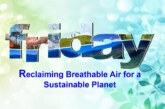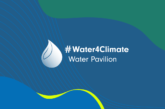
Dr. Arvind Kumar*
Glaciers aren’t just geographical feature, they’re sacred symbols of power and dignity deeply woven into cultural and religious traditions. These icy giants form the backbone of a delicate water-food-energy balance, providing essential melt-water for drinking, farming, and electricity generation for millions. But there’s trouble in paradise. Recent studies show global warming is melting these frozen reservoirs at alarming speeds losing a staggering 273 billion tonnes of ice yearly since 2000-2023, adding 18mm to rising seas and intensifying regional water shortages. In the Himalayas, temperatures have climbed 0.06°C annually since the 1970s, slashing ice mass by 40% since the Little Ice Age and accelerating melt rates tenfold in recent decades. In 2023, glaciers experienced their greatest water loss in over 50 years, marking the second consecutive year in which all glaciated regions worldwide reported ice loss. Switzerland, for instance, saw their glaciers lose 10 per cent of their total mass between 2022 and 2023, according to the WMO. Secretary-General Celeste Saulo of WMO emphasised this urgency, saying “Melting ice and glaciers threaten long-term water security for many millions of people. UN Secretary General Mr. António Guterres said “As glaciers melt, they quench the thirst of communities, sustain ecosystems, and support agriculture, industry, and clean energy. But scorching temperatures are draining these vaults at record speed – from the Himalayas to the Andes, from the Alps to the Arctic.”
Glaciers aren’t just stunning ice formations they’re lifelines that touch every aspect of human wellbeing. As perennial water sources, they keep entire water systems flowing, providing reliable supplies for farming, drinking, and power generation. Their ability to reflect heat into space helps maintain cooler regional temperatures, while their cold runoff naturally regulates downstream water temperatures and local weather patterns. Perhaps most ingeniously, glaciers form natural lakes that serve as additional reservoirs, further stabilizing river systems throughout the region. But how will communities adapt to changing water availability as these glaciers retreat? What role can technology play in monitoring and preserving these glacial systems? What indigenous knowledge systems might offer insights into sustainable adaptation strategies? And how effective are our current international agreements in addressing glacier melt?
Is Rapid Glacial Melt Impacting WEF Security?

These icy giants directly support numerous Sustainable Development Goals. They’re central to providing clean water for billions (SDG 6) and sustaining the irrigation systems essential for food security (SDG 2). The hydropower they generate reduces fossil fuel dependence (SDG 7), while their rapid melting underscores the urgency of climate action (SDG 13). As they feed rivers that support biodiversity (SDG 15), glaciers also sustain communities whose livelihoods in agriculture, fishing, and tourism depend on them directly linking to poverty reduction (SDG 1) and economic growth (SDG 8). That’s why their retreat isn’t just an environmental concern; it’s a threat to water security, economic stability, and the entire ecological balance of the region. Protecting these frozen treasures isn’t optional, it’s essential for sustainable development of all. South Asia’s black carbon pollution is delivering a double blow, reducing summer rainfall over the Tibetan Plateau by disrupting moisture patterns while darkening ice surfaces to speed melting by 15-22%. The consequences- Major disruptions to river systems that contribute 10% of Nepal’s water flow and a quarter of the Indus Basin’s supply.
Is Himalayan Glacier Retreat Threatening Regional Water Security and Ecosystems?
The Himalayas are facing a meltdown, and it’s happening fast. Dokriani Glacier is shrinking by 15-20 meters every year, while across the Hindu Kush Himalayas, glaciers are retreating nearly 15 meters annually. The Wadia Institute’s data shows this isn’t just a surface-level problem; these massive ice bodies are thinning dramatically, especially in the Garhwal region where the landscape and debris covering the ice create a patchwork of melting hotspots.
Things are speeding up too. ICIMOD’s research reveals glacier mass loss has accelerated by 65% since 2000, with yearly ice loss doubling in just a decade. Climatologists like Izabella Koziell (ICIMOD) stress that rising temperatures, black carbon pollution, methane emissions, and permafrost thaw are intensifying floods, landslides, and shifts in vegetation lines, destabilizing regional ecosystems and livelihoods.
We’ve already lost 40% of Himalayan ice volume, and scientists project we could lose 75% by 2100. That’s a terrifying prospect for the two billion people who depend on these glacier-fed rivers. The culprits? Rising temperatures, black carbon pollution, and thawing permafrost, a triple threat that’s triggering floods, landslides, and pushing vegetation zones uphill, destabilizing everything from ecosystems to local economies.
For countries like India, this isn’t just an environmental issue, it’s an economic emergency. Hydropower, irrigation systems, and water supplies are all at risk. The downstream effects are already visible: devastating avalanches and glacial lake outburst floods in Nepal and India, altered river courses in Bangladesh’s deltas, and accelerating biodiversity loss throughout the region. The clock is ticking on finding solutions to this Himalayan crisis.
Way Forward
To tackle the challenges of glacial melting, requires regional cooperation on data sharing, joint monitoring, and risk mapping to strengthen resilience. Countries can mitigate water scarcity by improving storage, enhancing irrigation efficiency, optimizing renewable energy, and adopting soil and water conservation techniques. Diversifying agriculture with climate-resilient crops and value chains will help manage economic impacts. Integrated river basin management and relocating infrastructure from high-risk zones are essential. Investing in infrastructure like lake water release systems, check dams, spillways, and early warning systems is crucial. Climate-resilient, multipurpose infrastructure focused on nature-based solutions and upstream support will enhance resilience. Adapting irrigation and hydropower operations, raising awareness, and building local capacity are key to sustainable development. Recognizing glacier regions and river basins as regional public goods is vital for funding. Innovative financing through eco-compensation, carbon markets, and blended finance should be explored. The private sector’s role as an investor and partner is critical for long-term success. We need to underscore the urgency of coordinated action to protect these critical freshwater reserves; the solution lies in regional collaboration, proactive investment in climate-resilient infrastructure, and the adoption of innovative financial strategies. By working together and addressing these challenges on a larger scale, countries can build a sustainable future that balances economic growth with environmental protection.
*Editor, Focus Global Reporter






